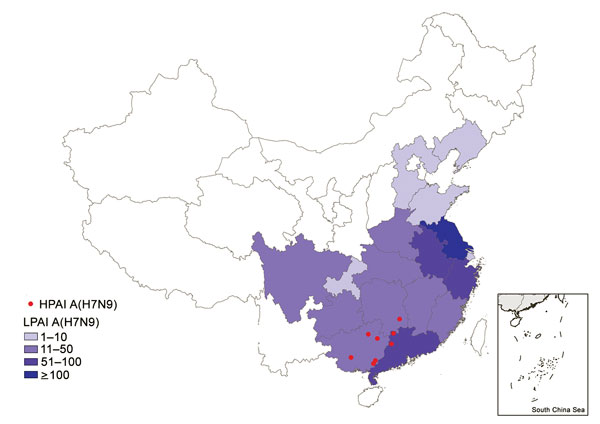Volume 23, Number 8—August 2017
Dispatch
Preliminary Epidemiology of Human Infections with Highly Pathogenic Avian Influenza A(H7N9) Virus, China, 2017
Figure 1

Figure 1. Geographic distribution of human cases of infection with HPAI A(H7N9) virus, China, September 1, 2016–March 31, 2017. The red circles indicate the counties with HPAI A(H7N9) virus infections within Guangxi, Guangdong, and Hunan provinces during the fifth epidemic. Shading indicates the total numbers of LPAI A(H7N9) virus infections by province during the fifth epidemic. HPAI, highly pathogenic avian influenza; LPAI, low pathogenic avian influenza.
1These authors contributed equally to this article.
Page created: July 18, 2017
Page updated: July 18, 2017
Page reviewed: July 18, 2017
The conclusions, findings, and opinions expressed by authors contributing to this journal do not necessarily reflect the official position of the U.S. Department of Health and Human Services, the Public Health Service, the Centers for Disease Control and Prevention, or the authors' affiliated institutions. Use of trade names is for identification only and does not imply endorsement by any of the groups named above.